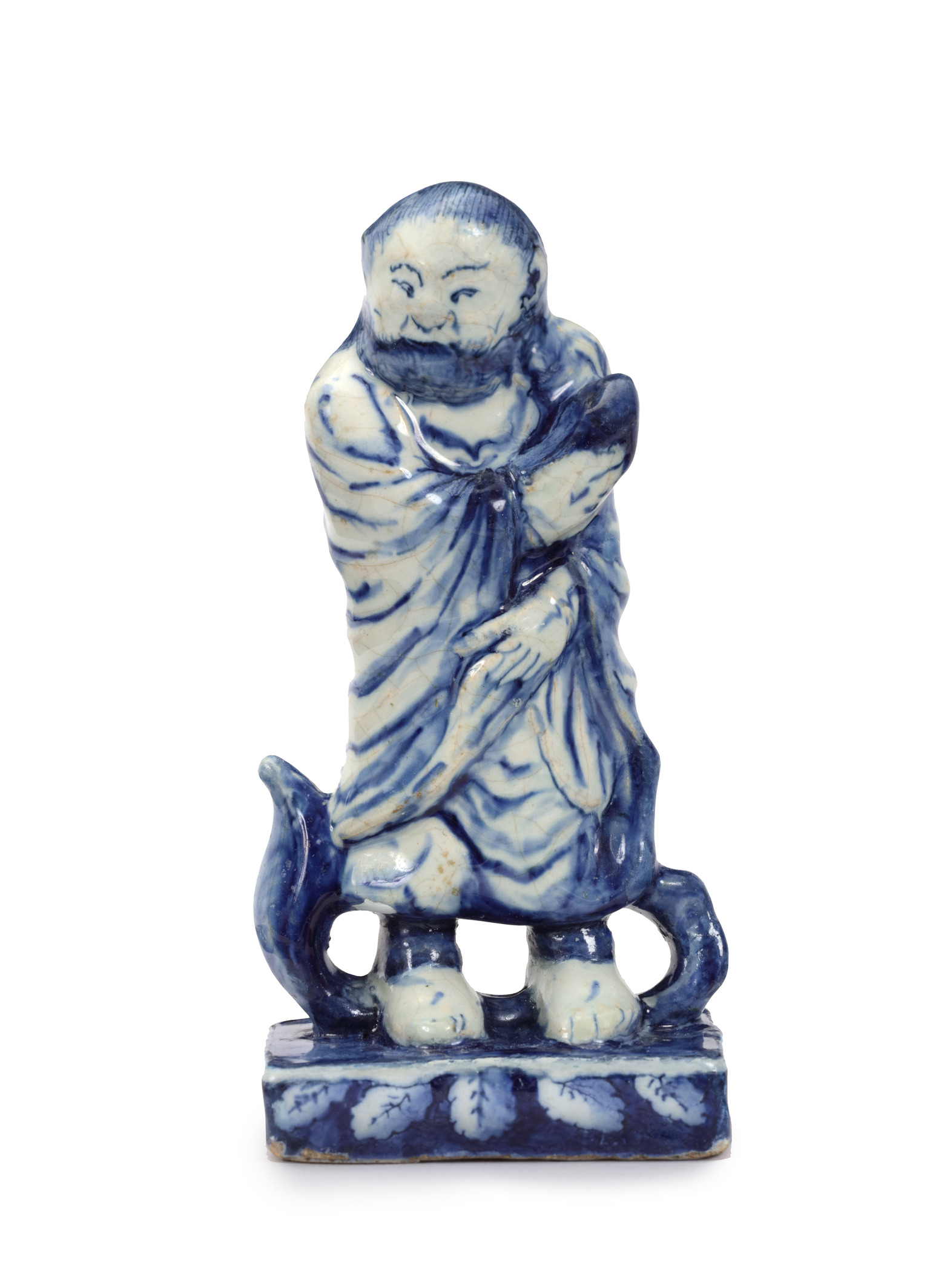![]()
Images on this website are licensed under a
Creative Commons Attribution-NoDerivs 3.0 Unported License.
OBJECT
•D2415. Blue and White Figure of a Chinese Man
Delft, circa 1700
The bareheaded and bearded Chinaman, which most likely depicts Bodhidharma (or Da Mo) crossing the Yangtze River, wearing a wide mantel delineated in blue, which imply the folds of the fabric, his right hand holding an object, possibly his shoe, his left hand holding his mantel, modeled barefoot standing upon a wave or common reed, shaped on a rectangular blue base, decorated with a band of leaves around the base rim.
DIMENSIONS
Height: 15 cm. (5.9 in.)
NOTE
Chinese and Japanese porcelain figurines made their way into the Dutch market from the latter part of the seventeenth century onward and Delft potters emulated the popular figures in earthenware. Although rare, there are references to chinoiserie figurines from the period, such as the ‘East-Indian statues of earthenware’ noted in a 1725 inventory of De Paauw (The Peacock). The surviving examples of Delft chinoiserie figurines are largely unmarked with a few exceptions: to date, only two distinct factory marks have been identified on Delft chinoiserie figurines, that of Adrianus Kocx and his son Pieter, owner of De Grieksche A factory from 1687 to 1722 and Lambertus van Eenhoorn, owner of De Metaale Pot (The Metal Pot) factory from 1691 to 1721.
This figure most likely depicts Bodhidharma, also known as Daruma or Da Mo. He was an Indian monk who traveled to China in the sixth century, bringing Buddhist scriptures with him. Bodhidharma is credited as the founder of Chan Buddhism, or Zen in Japanese. Following an unsuccessful interaction with Emperor Wu of the Chinese Liang dynasty (502-557), Bodhidharma is believed to have traversed the Yangzi River atop a singular reed, continuing his quest to spread the teachings of Zen. Porcelain representations of him gained widespread popularity and were commonly employed on household and temple altars.
We acknowledge with thanks the help of mr. Yang Xu of the Kunstmuseum, The Hague, in attributing the character.









